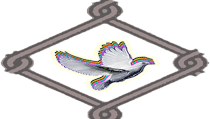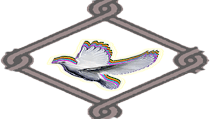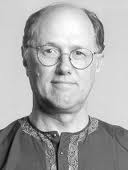Appreciating the Language of Paradox and Mystery
by
George Wolfe
In an online video, physicist Richard Feynman refers to ancient creation myths as “theories.” This is a common misconception held by many atheists, and also by many believers. A theory grows out of a reasoned assessment of observed events and generates a hypothesis that hopefully can one day be tested. Myths and legends are forms of story telling. They are meant to awaken us to paradox and mystery and be a catalyst for philosophical discussion.
Ancient creation stories found in religious scripture are not theories. Rather, they are a genre of literature — myths that harbor symbolic meaning. They were written by poets, not scientists. They are intended to inspire people to think deeply about the origins of the cosmos, human existence, and the relationship humans are to have with each other and the natural world.
This view is supported by the fact that there are actually two creation stories in the book of Genesis that appear to contradict each other. The first story is in Genesis, Chapter 1, while the second is in Chapter 2. In Chapter 1, Adam, the prototypical man, is created last. In Chapter 2, he is created first, after which he gives names to all things that are created (Gen.: 2:20). The subject of relationship is explored between Adam and his mate, Eve, and between the first couple and their creator.
These two ancient myths were undoubtedly meant to inspire discussion between Rabbis and their disciples, resulting in dialogs that led to the Jewish commentaries known as the Talmud. Perhaps these contradictory tales were used to generate dialog on the enduring question: “To what extent can creation exist without human consciousness, without us being here to experience it, name it and give it reality?”
That ancient creation stories should be viewed as allegorical works of literature rather than theories is complicated by the fact that the literary style of ancient writers often merged myth and history.
Homer’s Illiad, for example, set the Trojan War around such characters as Achilles, whose mother had dipped him in the river Styx. This made him invulnerable as a warrior except for his heel, which his mother held on to while immersing him in the river. The name Achilles refers to the “grief of the people,” an appropriate image that relates to the tragedy of war. And by including Achilles, Homer’s dramatization of history also alludes to a myth that warns us of a significant truth; that is, no matter how powerful and influential we may become, there is always a weakness somewhere that makes us vulnerable and has the potential to bring about our downfall.
Jewish writers who wrote much of the Bible were exceptionally good at integrating myth and history and did so in such a convincing manner that for many people, it is difficult to determine where history leaves off and myth begins.
For example, in the book of Exodus, when Moses questions whether his people would believe him, God commands him to cast the rod he was carrying onto the ground, whereupon it turns into a serpent, only to become a rod again when Moses picks it up (Exodus 4:1-5). Myth or History? An allegorical interpretation suggests this mythological embellishment testifies to the conquering power of God’s wisdom over evil, the serpent intended as a symbol for temptation and deception as it was so used in the Garden of Eden myth.
Ancient literary masters created religiously inspired histories and brought forth a language infused with poetic beauty and the richness of symbolism. It is a language that is purposefully ambiguous so as to allow for multiple interpretations. This is not the language of science. Rather, it is the language of scripture, the language of psalms, the language of paradox, and the language of a literary style that weaves together myth and history. As explained by Father Richard Rohr in his book The Naked Now, an important purpose of religion is to “give us that eye for paradox and mystery.”
George Wolfe is the Coordinator of Outreach Programs for the Ball State University Center for Peace and Conflict Studies. He also chairs the Muncie Interfaith Fellowship and is the author of the soon to be published book Meditations on Mystery: Science, Paradox and Contemplative Spirituality.



